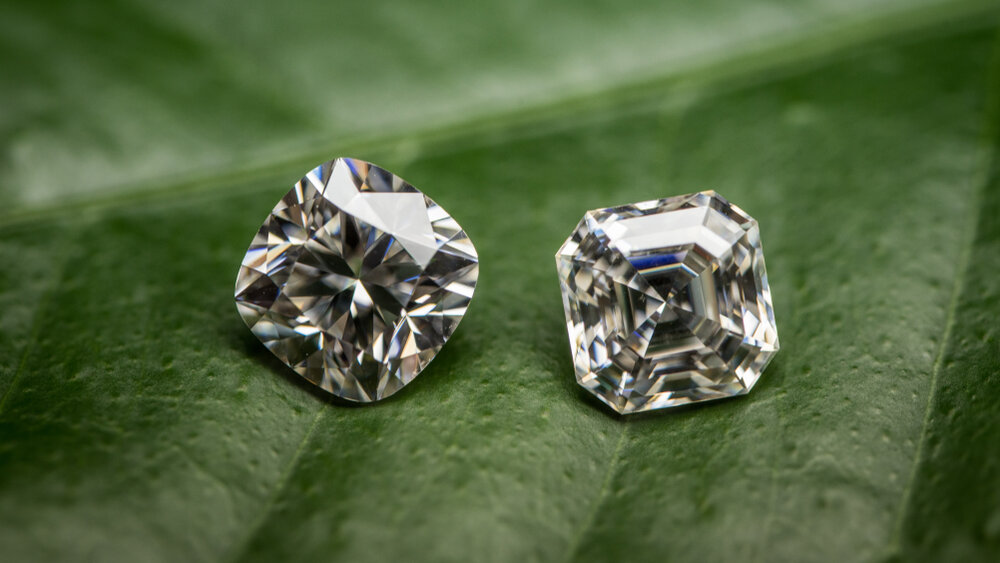Diamonds have long been considered a symbol of love, commitment, and enduring elegance. However, as technology advances and consumers become more informed and environmentally conscious, the conversation has shifted. Today, one of the most discussed topics in the jewelry industry revolves around the comparison between lab grown vs natural diamonds, and what that means for consumers.
Whether you’re in the market for an engagement ring, a statement necklace, or simply curious about the science behind sparkle, understanding the distinctions between man-made diamonds and their natural counterparts is more important than ever.
Table of Contents
What Are Lab-Grown Diamonds?
Lab-grown diamonds, also known as man-made or synthetic diamonds, are created using advanced technological processes that replicate the conditions under which natural diamonds form deep within the Earth’s mantle. Two primary methods are used:
-
High Pressure, High Temperature (HPHT): This process mimics the natural diamond-forming environment by exposing carbon to intense heat and pressure.
-
Chemical Vapor Deposition (CVD): In this method, carbon-containing gases are heated inside a chamber, causing carbon atoms to deposit and crystallize into diamond form.
Despite being manufactured in controlled settings, lab-grown diamonds are chemically, physically, and optically identical to mined diamonds. They are not imitation stones like cubic zirconia or moissanite—lab diamonds are real diamonds.
Natural Diamonds: A Product of Time and Earth
Natural diamonds are formed over billions of years under extreme heat and pressure in the Earth’s mantle. Eventually, volcanic eruptions transport these crystals to the surface, where they are extracted through mining.
Each natural diamond carries a unique geological history. Their formation process can take over a billion years, which adds to their mystique and perceived value. Their rarity—especially in certain color and clarity grades—continues to drive demand in the luxury market.
Visual and Chemical Similarities
To the naked eye, there’s virtually no difference between a lab-grown and natural diamond. Even trained gemologists often require advanced equipment to tell them apart. Both types of diamonds share the same crystal structure and brilliance.
However, under a microscope or through spectroscopy, lab diamonds might display growth patterns or inclusions that indicate their synthetic origin. Organizations like the Gemological Institute of America (GIA) and International Gemological Institute (IGI) offer grading reports for both lab-grown and natural diamonds, which help consumers make informed choices.
Price and Value Considerations
One of the most significant distinctions in the lab grown vs natural diamonds debate is cost. Lab-created diamonds are typically 30–50% less expensive than natural diamonds of similar size and quality. This price difference stems from supply dynamics and production efficiency—lab diamonds can be created in weeks, while natural diamonds require extensive and often environmentally invasive mining.
However, when it comes to resale or long-term value, natural diamonds tend to hold their worth better. The resale market for lab diamonds is still developing and may not yield significant returns. If you’re purchasing a diamond purely as an investment, natural stones may offer more long-term value.
Ethical and Environmental Impact
The ethical appeal of lab-grown diamonds is one of the main reasons behind their increasing popularity. Traditional diamond mining has long been associated with environmental degradation, human rights concerns, and conflict funding—often referred to as “blood diamonds.”
Lab-grown diamonds offer a more sustainable and ethical alternative. They generally have a smaller environmental footprint and eliminate concerns related to exploitative labor practices. For socially conscious consumers, man made diamonds provide peace of mind without compromising on quality or aesthetics.
That said, it’s important to note that not all lab diamond manufacturers are equally sustainable. Some production methods still consume significant energy, especially if powered by fossil fuels. Therefore, it’s wise to look for companies that use renewable energy and are transparent about their practices.
Emotional and Cultural Value
While lab-grown diamonds may offer practical advantages, some buyers still lean toward natural diamonds for their emotional and symbolic significance. For many, the rarity and ancient origin of a natural diamond enhance its sentimental value, especially in romantic contexts like engagements and anniversaries.
Culturally, natural diamonds have a longer-standing presence and are often seen as heirlooms passed down through generations. This historical resonance contributes to their allure, even in an age of high-tech alternatives.
Trends and Consumer Preferences
The past decade has witnessed a sharp rise in the popularity of lab-grown diamonds, particularly among Millennials and Gen Z consumers. Younger buyers tend to prioritize sustainability, value, and ethics—making man made diamonds an attractive choice.
Retailers have adapted to this shift by offering wider selections of lab-grown options. Major brands, including De Beers and Pandora, have even launched their own lines of synthetic diamonds, signaling a significant change in industry dynamics.
Despite growing demand, natural diamonds continue to dominate certain luxury sectors, particularly for high-end collectors and traditionalists.
Making the Right Choice
When it comes to choosing between lab grown vs natural diamonds, there is no universally right answer—only what’s right for you.
If your priorities include affordability, ethical sourcing, and environmental sustainability, a lab-grown diamond could be the ideal fit. On the other hand, if you’re drawn to rarity, potential long-term value, and tradition, a natural diamond may align better with your values.
Whichever path you choose, ensure you purchase from a reputable jeweler who provides certification and clear disclosure about the diamond’s origin and characteristics.
Conclusion: Two Paths to the Same Sparkle
The rise of lab-grown diamonds has revolutionized the way we think about luxury and value. Today’s consumers are empowered with options that align with their personal, ethical, and financial goals.
Understanding the differences between man made diamonds and natural stones enables you to make a confident, informed decision—one that suits your unique style and story.
Whether forged in the depths of the Earth or created in a high-tech lab, a diamond’s true beauty lies in the meaning you give it. Both types sparkle with possibility. The choice is yours.




